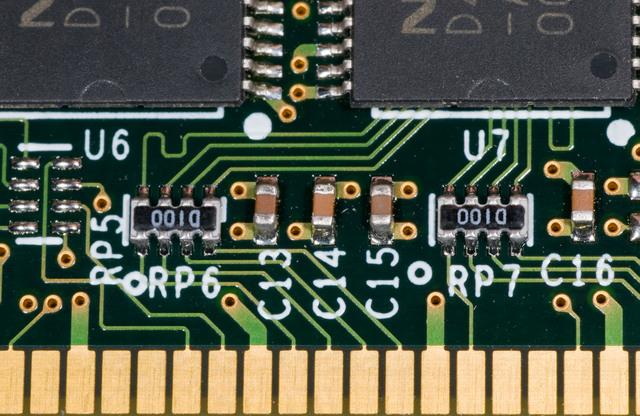Content Menu
● The Importance of Testing SMT Line Operators
>> Quality Assurance
>> Skill Verification
>> Safety Standards
>> Employee Development
● Methods of Testing SMT Line Operators
>> Theoretical Assessments
>> Practical Evaluations
>> Ongoing Performance Reviews
● Implications of Testing on Quality and Efficiency
>> Enhanced Quality Control
>> Increased Efficiency
>> Employee Morale
● Challenges Associated with Testing SMT Line Operators
>> Resistance to Testing
>> Resource Allocation
>> Keeping Tests Relevant
● Best Practices for Implementing Testing Programs
● Conclusion
● FAQ
>> 1. What types of tests should be administered to SMT line operators?
>> 2. How often should SMT line operators be tested?
>> 3. What are the benefits of testing SMT line operators?
>> 4. How can companies address resistance from employees regarding testing?
>> 5. What challenges do companies face when implementing testing programs?
In the realm of manufacturing and production, particularly in electronics assembly, the role of Surface Mount Technology (SMT) line operators is pivotal. These operators are responsible for the setup, operation, and maintenance of machines that place electronic components onto printed circuit boards (PCBs). Given the complexity and precision required in this field, a critical question arises: should SMT line operators be tested? This article delves into the importance of testing SMT line operators, the methods of testing, the implications of such tests on quality and efficiency, and the broader context within which these operators work.

The Importance of Testing SMT Line Operators
Testing SMT line operators serves multiple purposes that are crucial for maintaining high standards in electronics manufacturing.
Quality Assurance
One of the primary reasons for testing is to ensure quality assurance. In an industry where even a minor error can lead to significant defects in electronic products, it is essential that operators possess the necessary skills and knowledge. Testing can help identify gaps in understanding or skills that could lead to mistakes on the production line. For instance, an operator who misplaces a component or fails to follow machine settings correctly can cause a cascade of errors that affect the entire production batch.
Skill Verification
Another critical aspect is skill verification. SMT line operators must be adept at using complex machinery and understanding intricate processes. Testing can provide a benchmark for evaluating their capabilities. This is particularly important when new technologies or equipment are introduced, as existing operators may need retraining or upskilling. Regular skill assessments ensure that all operators are up-to-date with current practices and technologies.
Safety Standards
Testing also plays a vital role in ensuring safety standards are met. Operators must be aware of safety protocols to prevent accidents and injuries on the production floor. Regular assessments can reinforce these standards and ensure compliance with industry regulations. For example, understanding how to handle hazardous materials or operate machinery safely can significantly reduce workplace accidents.
Employee Development
Furthermore, testing can facilitate employee development. By identifying strengths and weaknesses through assessments, companies can tailor training programs to enhance operator skills, ultimately leading to increased productivity and job satisfaction. When employees see a clear path for advancement based on their skills and knowledge, they are more likely to engage actively in their roles.
Methods of Testing SMT Line Operators
Various methods can be employed to test SMT line operators effectively. These methods can be categorized into theoretical assessments, practical evaluations, and ongoing performance reviews.
Theoretical Assessments
Theoretical assessments typically involve written tests or online quizzes that evaluate an operator's knowledge of SMT processes, machinery operation, and safety protocols. These tests can cover topics such as:
- Understanding of SMT components
- Knowledge of PCB design
- Familiarity with machine settings and adjustments
- Awareness of safety regulations
These assessments provide a baseline understanding of an operator's theoretical knowledge. They can also highlight areas where additional training may be necessary.
Practical Evaluations
Practical evaluations are essential for assessing hands-on skills. Operators may be observed while performing their duties on the production line. Evaluators can assess their ability to:
- Set up machines correctly
- Troubleshoot common issues
- Maintain equipment
- Follow safety protocols during operations
Practical evaluations offer insight into how well an operator can apply their theoretical knowledge in real-world scenarios. For instance, an operator might excel in a written test but struggle when faced with actual machinery setup or troubleshooting.
Ongoing Performance Reviews
Ongoing performance reviews involve regular monitoring of an operator's work over time. This method allows supervisors to track improvements or declines in performance and address any issues promptly. Performance metrics might include:
- Production speed
- Error rates
- Compliance with safety procedures
These reviews help maintain consistent quality levels and provide opportunities for continuous improvement. Moreover, they create an environment where feedback is part of daily operations rather than something reserved for annual reviews.

Implications of Testing on Quality and Efficiency
The implications of testing SMT line operators extend beyond individual performance; they significantly impact overall quality and efficiency within manufacturing processes.
Enhanced Quality Control
By implementing rigorous testing protocols, companies can enhance their quality control measures. Operators who are well-trained and tested are less likely to make errors that could compromise product quality. This leads to fewer defects in finished products, reducing waste and rework costs. High-quality products not only satisfy customer demands but also enhance a company's reputation in a competitive market.
Increased Efficiency
Testing also contributes to increased efficiency on the production line. Operators who understand their roles thoroughly can work more quickly and effectively. This efficiency translates into higher output rates and improved turnaround times for products, giving companies a competitive edge in the market. Moreover, efficient operations often lead to lower operational costs per unit produced.
Employee Morale
Moreover, testing can positively influence employee morale. When operators know they are being assessed fairly based on their skills and knowledge, it fosters a sense of accountability and pride in their work. Additionally, opportunities for development through testing can motivate employees to improve their skills further. A culture that values continuous learning often leads to higher job satisfaction and lower turnover rates.
Challenges Associated with Testing SMT Line Operators
Despite its benefits, testing SMT line operators does come with challenges that organizations must navigate carefully.
Resistance to Testing
One significant challenge is resistance from employees who may view testing as punitive rather than constructive. To mitigate this resistance, companies should communicate the purpose of testing clearly—that it is aimed at improving skills rather than penalizing poor performance. Engaging employees in discussions about the benefits of testing can help foster a more positive attitude toward assessments.
Resource Allocation
Another challenge is resource allocation. Developing comprehensive testing programs requires time, financial investment, and personnel dedicated to creating assessments and conducting evaluations. Companies must weigh these costs against the potential benefits gained from improved operator performance. It may also involve investing in training materials or hiring external experts for specialized training sessions.
Keeping Tests Relevant
Additionally, keeping tests relevant is crucial as technology evolves rapidly in electronics manufacturing. Continuous updates to testing materials are necessary to ensure they reflect current practices and technologies used in SMT operations. Companies should regularly review their assessment criteria to align with industry advancements.
Best Practices for Implementing Testing Programs
To maximize the effectiveness of testing programs for SMT line operators, companies should consider several best practices:
- Involve Employees: Engage operators in the development process of testing programs to ensure they feel included and valued.
- Provide Training: Offer training sessions before assessments to prepare operators adequately.
- Use Varied Assessment Methods: Combine theoretical tests with practical evaluations for a comprehensive assessment approach.
- Offer Feedback: Provide constructive feedback after assessments so that operators know where they stand and how they can improve.
- Continuously Improve: Regularly review and update testing materials based on technological advancements and feedback from employees.
Conclusion
In conclusion, testing SMT line operators is not only beneficial but essential for maintaining high standards in electronics manufacturing. Through various methods such as theoretical assessments, practical evaluations, and ongoing performance reviews, companies can ensure that their operators are skilled, knowledgeable, and compliant with safety standards. The implications of such testing extend beyond individual performance to enhance overall quality control and efficiency within production processes.
However, organizations must also be mindful of the challenges associated with implementing testing programs—such as employee resistance and resource allocation—to maximize their effectiveness. Ultimately, investing in the training and assessment of SMT line operators leads to improved product quality, increased efficiency, and a more satisfied workforce.

FAQ
1. What types of tests should be administered to SMT line operators?
Testing should include theoretical assessments covering knowledge about SMT processes and practical evaluations assessing hands-on skills with machinery.
2. How often should SMT line operators be tested?
Regular assessments should be conducted periodically—at least annually—with ongoing performance reviews occurring more frequently based on production needs.
3. What are the benefits of testing SMT line operators?
Benefits include enhanced quality control, increased efficiency on the production line, improved employee morale, and better compliance with safety regulations.
4. How can companies address resistance from employees regarding testing?
Companies should communicate clearly about the purpose of testing as a tool for development rather than punishment while providing support throughout the process.
5. What challenges do companies face when implementing testing programs?
Challenges include employee resistance to testing, resource allocation for developing assessments, and keeping tests relevant amidst rapidly evolving technology.




















